Snapshots from the Azores
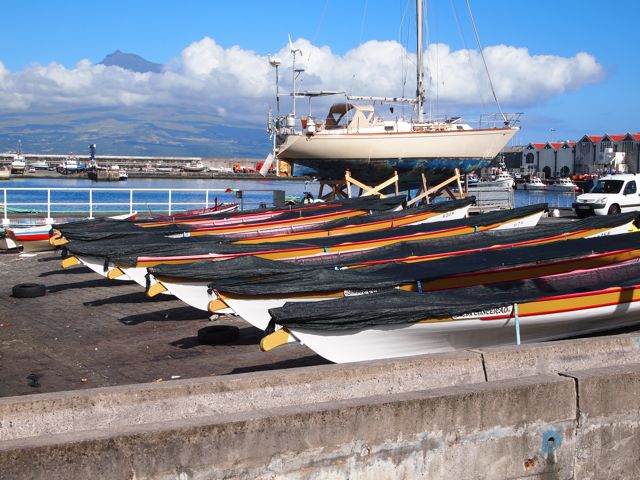
We’re slowly getting back to our normal routines, and we took the opportunity to unplug and rest (facilitated by the broken wifi in our apartment that was just fixed) after arriving back in Spain. We had a happy reunion with our dogs, and we’re now going through our pictures and video to share some of the highlights.
Our stop in the Azores was brief – much too brief, and we have promised ourselves to return. The six-day passage to and from the islands from Europe on our boat is a bit daunting if you only have a fixed number of days (as we now know), but we’re still planning on getting back to the islands. There are rumors that the Azores might have been “Atlantis”, and it’s certainly a plausible idea, as the islands are so uniquely beautiful – not at all in a tropical sense, but in a “I have never seen so many hydrangeas in my life” sense (note: hydrangeas are not native to the Azores, but have become somewhat symbolic of the islands – hopefully they will not become pests).
The Azores have a volcanic history, with the archipelago comprised of 9 islands that spread over 600 miles across the Atlantic; it took us a day to get to Faial after seeing the westernmost islands of Corvo and Flores! The island of Faial, where we visited, lies in the middle group, next to the towering island of Pico (2,351 meters tall). Horta is the key port on Faial, with a population of just over 15,000 people. Curiously, three of the other islands have larger populations (Pico, Terceira and São Miguel), and the entire population of the islands is almost a quarter million inhabitants. Horta has long been a standard port of call among sailing vessels, full of sailing traditions and history. Three of the most important items on our Azorean “to do” list were to 1) see whales; 2) add our boat name to the quay wall (read: “legal graffiti”); and 3) visit Peter Sport Café, where we were a bit shocked to see whale soup on the menu, but did our best of enjoy the nautical ambience of the café anyway. The island, like many others, had been a whaling station in its past, but the whalers have been (reputedly?) displaced by whale-watching fleets that help showcase the more than 20 species of whale and dolphin that can be seen in Azorean waters.
We accomplished all three of the items on our agenda, in addition to spending most of a day riding mopeds around the island, checking out two volcanoes, beaches and simply wandering. The whales we saw after leaving Horta, and although they were not close enough to clearly identify, we saw several pods. We also sampled lots of amazing cheese (the cows we smelled from the water the night we arrived were not in our heads!), tried grilled limpets (chewy but tasty) and drank very good local wine. Truly, the scenery was incredible, with meandering roads that tossed you into a new lovely vista every few minutes.
Here are some of our pictures…
-
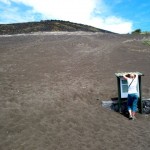
- Capelinhos – this is the site of an eruption that happened in 1957/1958. There is now a museum that is below groundlevel that shows how much ash accumulated.
-
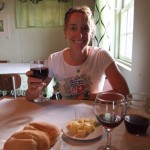
- Our stop for lunch during our moped trip. The wine was homemade, and we took a long lunch to eat a fantastic bean stew, Azorean cheese and the table wine.
-
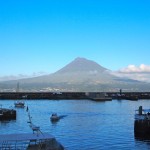
- Looking across to Pico, which is one of the tallest mountains on earth, considering its rise from the bottom of the sea.
-
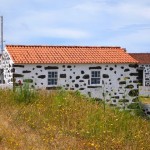
- There were a number of buildings constructed in what we called, “cow spot architecture.” We think it was inspired by…the cows on Faial.
-
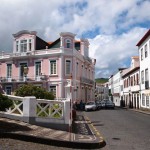
- There were a number of more colonial-looking houses along the waterfront of Horta. Note the decoration in the sidewalks.
-
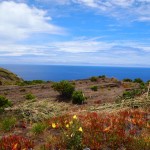
- It’s hard to not think that everything is gorgeous against a backdrop of blue from the sky and the Atlantic.
4 comments
Leave a ReplyCancel reply
Sign up to receive blog updates
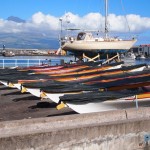
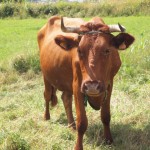
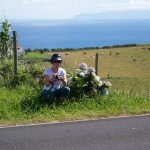
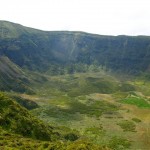
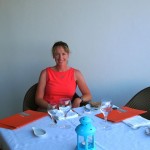


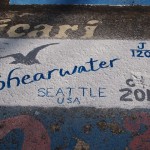
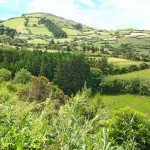
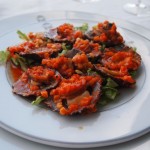
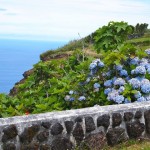
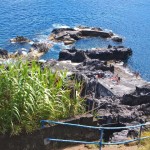
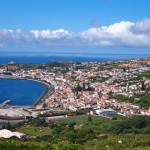
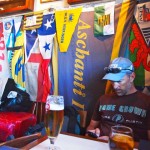
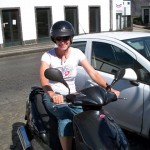

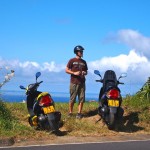





WOW…beautiful photos!!! The islands really look fantastic. The mopeds appeared to be the “fancy” variety:) What was the speed limit there? Keep on blogging……..have so enjoyed reading about your adventures. Love, Mom
Mom –
Most of the roads had a speed limit of 40 km/hr, but we did go on a highway that was 80 km/hr (chipmunk cheeks!) where we stayed pretty far towards the shoulder. Really, there was not a lot of traffic, other than being in Horta, along the surface streets, but the speed limits were even lower there. It was such a fun thing to do!
Great Pictures looks like lots of fun beautiful thanks for sharing
Aunt Anne
Thank you!